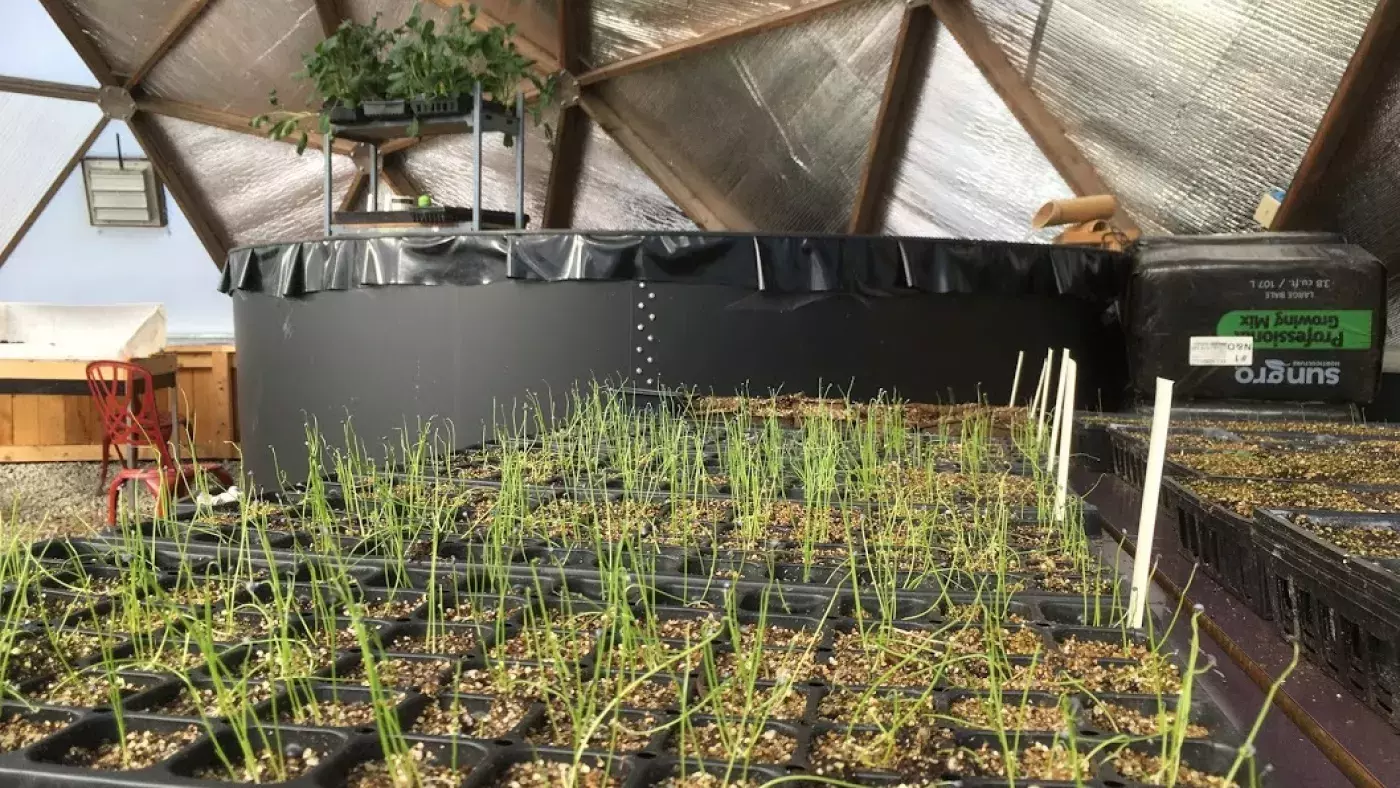

Experimental Research by Hazel Chan, Sustainable Agriculture and Food Systems Student, 2018
Wireworm Control in Scallions: Attract-and-Kill Tactic Using Metarhizium brunneum granules and Rolled Oats
Introduction
Wireworms (Agriotes lineatus) are click beetle larvae that reside in the soil. Being generalist feeders, wireworms attack a wide range of crops, including scallions.
Options for wireworm control have been very few and limited to broad-spectrum chemical insecticides, many of which have been deregistered from use due to negative environmental impacts. Consequently, wireworm damage has been an increasing issue across many parts of the world and has created the need for more environmentally sustainable alternatives, such as biopesticides.
Metarhizium brunneum is a fungal biopesticide, fatal to wireworms, that has been tested in field experiments and found to reduce wireworm damage for potato and wheat crops. Since wireworms are attracted to sources of carbon dioxide such as rolled oats, an attract-and-kill strategy that places rolled oats alongside M. brunneum granules can be an effective way to control wireworm larvae.
This experiment tested the effectiveness of the attract-and-kill strategy based on Metarhizium granules and rolled oats in reducing wireworm damage on scallions
Image
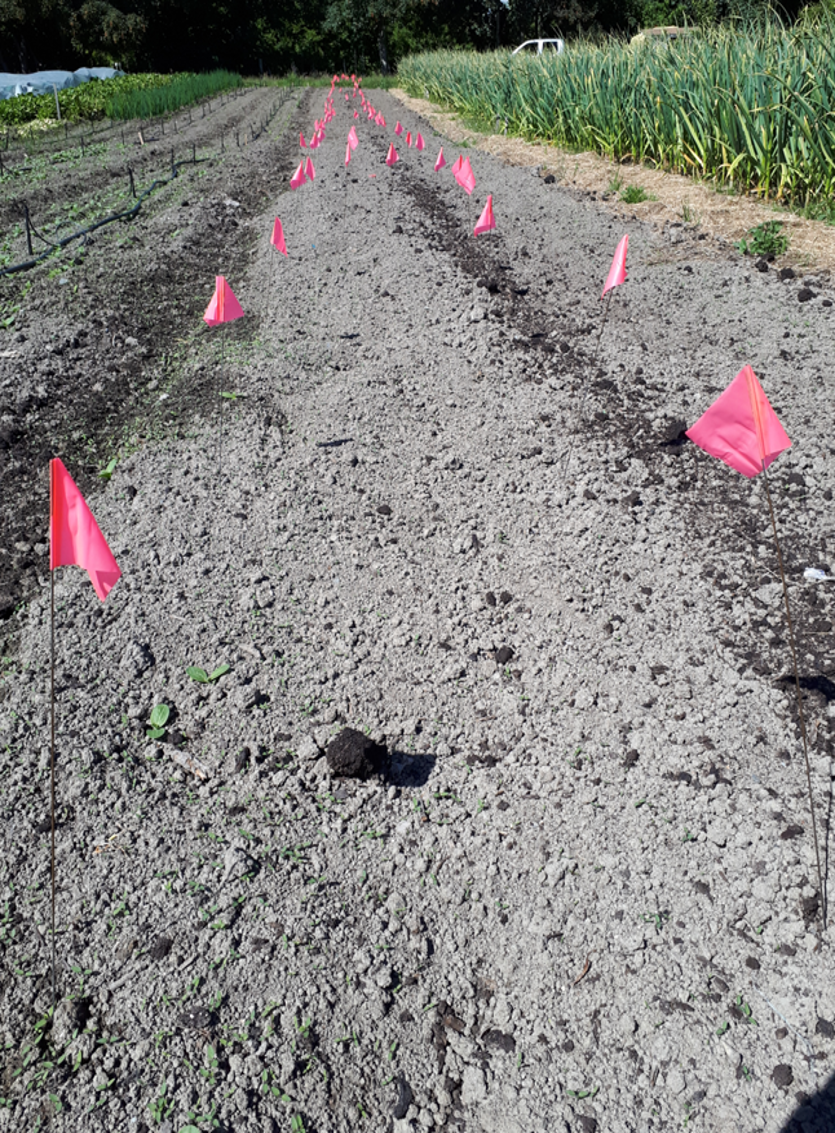
|
Fig 1. Study area at the Kwantlen Polytechnic University Orchard. |
Methods
This experiment was conducted in a 35 m x 0.8 m bed at the Kwantlen Polytechnic University Orchard (Fig. 1). The experimental subjects were scallion plants and naturally occurring wireworms at the KPU Orchard. The three experimental treatments were Metarhizium and rolled oats, rolled oats, and an untreated control.
The experiment used a randomized complete block design with 6 replicates for each of the 3 treatments, for a total of 18 (1 m x 0.8 m) experimental plots. Each plot contained 3 rows of scallions, 10 scallion plants per row, and 4 inter-row band applications of assigned treatment (Fig. 2). Plants were spaced 7 cm apart, rows were spaced 20 cm apart, and plots were spaced 1 m apart.
Image
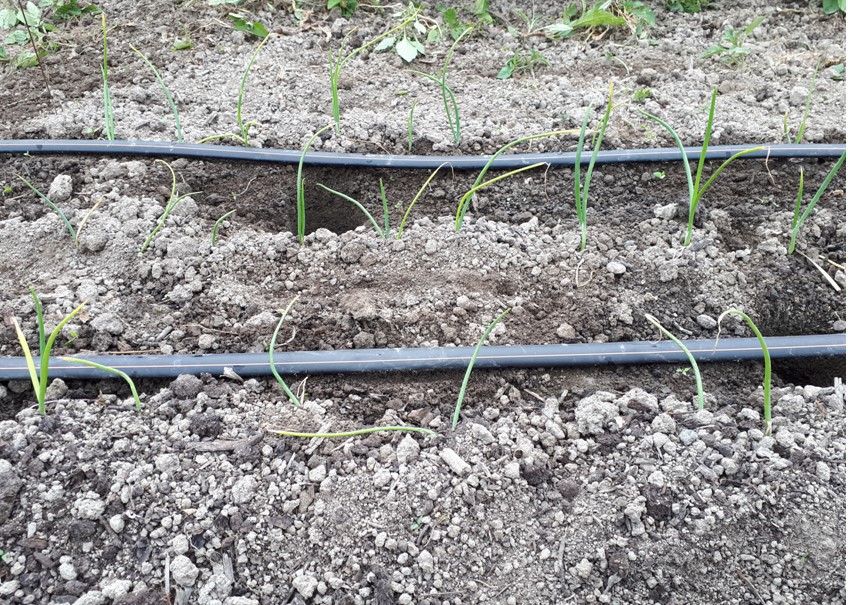
|
Fig 2. Scallion plants in an experimental plot. |
10 g of Oats and 1.11 g of Metarhizium were weighed into individual cups, for a total of 480 g of oats and 26.6 g of Metarhizium (May 30, 2018). Treatments were band-applied between the plant rows at their respective plots on May 31. Oats were applied at a target rate of 10 g / 1 m row, and Metarhizium granules were applied at a target rate of 1.11 g/ row. Scallion transplants were planted in each plot on June 14, two after treatment application. Plots were weeded manually each week until July 24.
Image
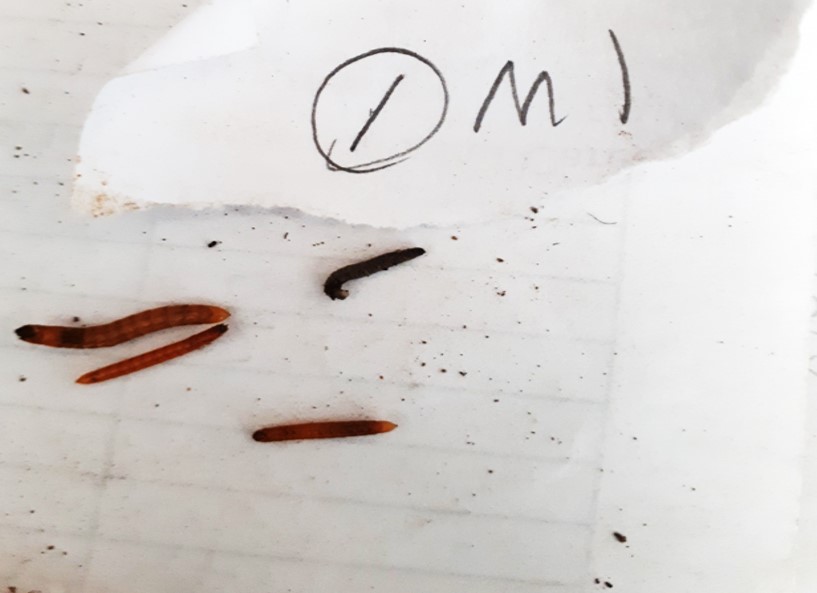
|
Fig 3. Wireworm larvae from scallions harvested from a plot treated with Metarhizium and rolled oats. |
Image
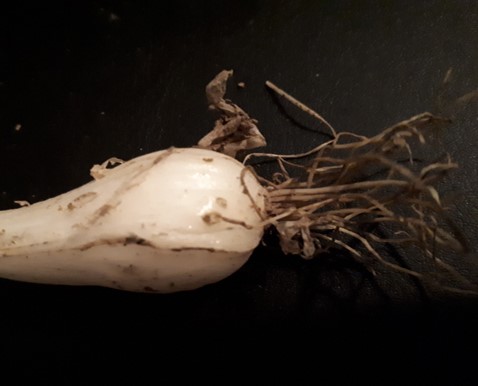
|
Fig 4. Feeding hole near the base of a harvested scallion plant. |
Scallion stems were counted before harvest (July 25-26, 2018). Wireworm larvae (Fig. 3) and feeding holes in scallions (Fig. 4) were counted at harvest on July 31. Harvested scallions were oven dried for 24 hours at 55 degrees Celsius before dry weight was recorded on August 2.
Data were analyzed by Analysis of Variance and Tukey's Honestly Significant Difference test using the R statistical software (ɑ = 0.05).
Results
Treatment had a significant effect on dry weight of scallions: Scallion dry weight was significantly higher in the Metarhizium treated plots than in the control plots (p=0.01) (Fig. 5).
The effect of treatment approached statistical significance for the number of holes per scallion stem (p=0.06) (Fig. 8) and for the dry weight per scallion stem (p=0.07) (Fig. 7): Scallions in the Metarhizium treated plots tended to have a higher number of stems (Fig. 6), higher dry weight (Fig. 7), and fewer feeding holes (Fig. 8) than scallions in the untreated control or oats treated plots, although these effects were marginally significant (p0.1).
Image
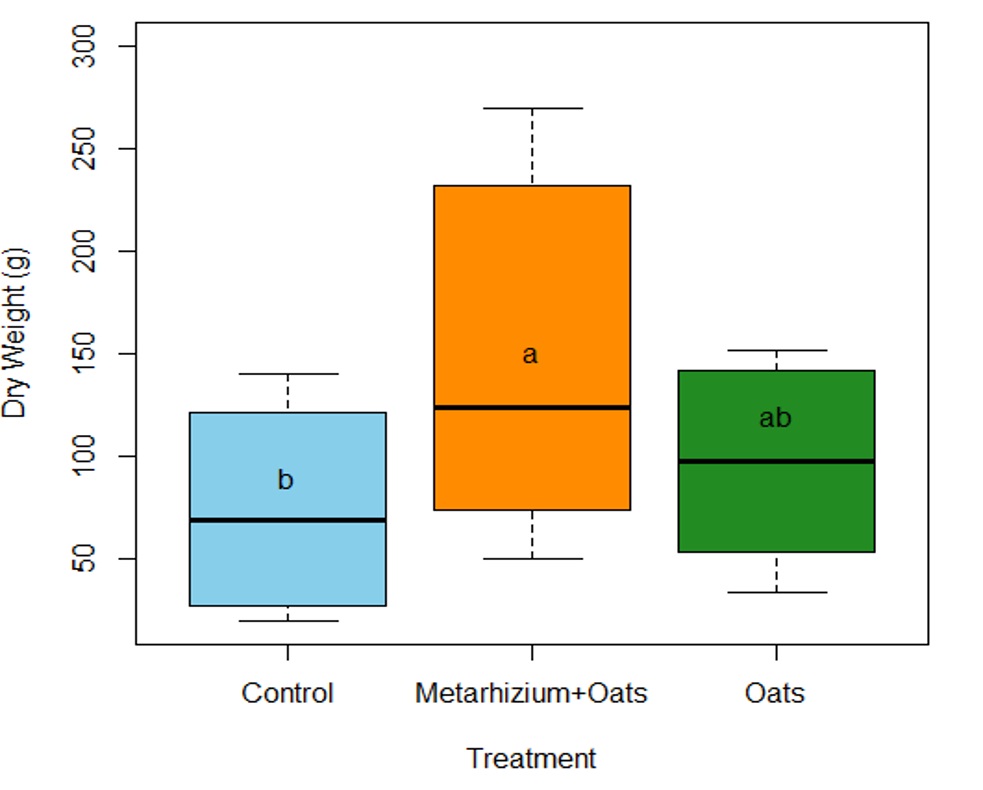
|
Fig 5. Dry weight of scallions harvested from untreated plots (Control), and plots treated with Metarhizium and rolled oats (Metarhizium+Oats), or rolled oats alone (Oats). Treatments labeled with the same letter do not differ significantly (Tukey’s HSD test, ɑ = 0.05.) |
Image
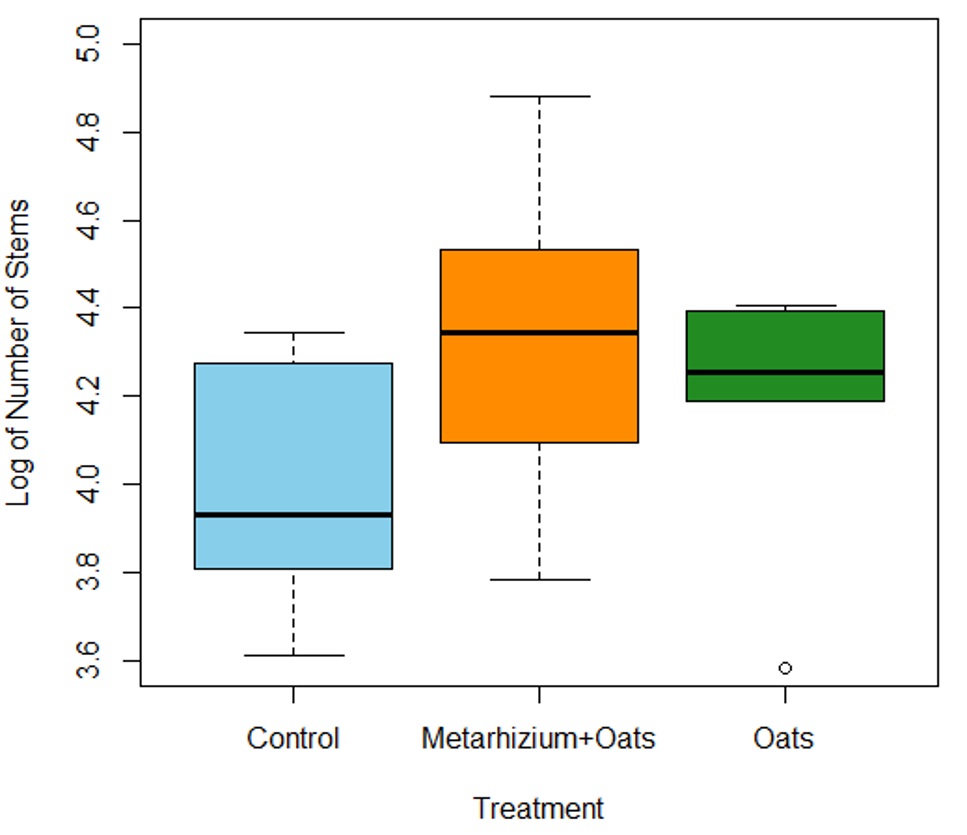
|
Fig 6. Number of stems for scallions harvested from untreated plots (Control), and plots treated with Metarhizium and rolled oats (Metarhizium+Oats), or rolled oats alone (Oats). Data were log-transformed for normalization. No significant difference was found between treatments. |
Image
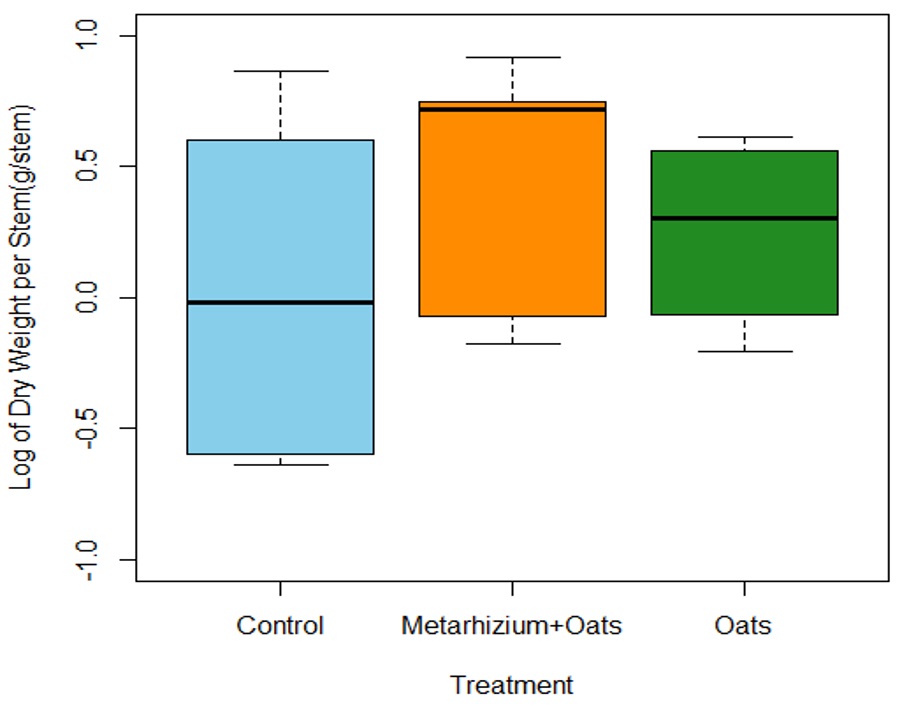
|
Fig 7. Dry weights of scallions per stem of scallions harvested from untreated plots (Control), and plots treated with Metarhizium and rolled oats (Metarhizium+Oats), or rolled oats alone (Oats). Data were log-transformed for normalization. No significant difference was found between treatments. |
Image
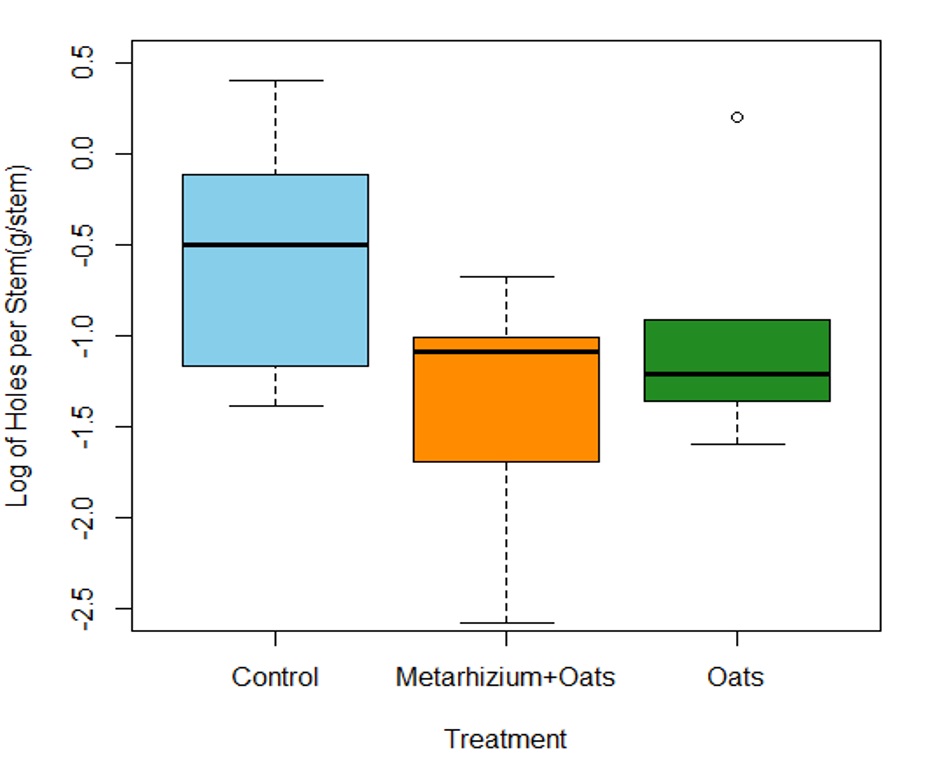
|
Fig 8. Number of feeding holes per scallion stem for scallions harvested from untreated plots (Control), and plots treated with Metarhizium and rolled oats (Metarhizium+Oats), or rolled oats alone (Oats). Data were log-transformed for normalization. No significant difference was found between treatments. |
Conclusion
The combination of Metarhizium and rolled oats increased yield and tended to reduce wireworm damage to scallions, relative to untreated controls.
Acknowledgements
Mike Bomford provided support and guidance throughout the study. Todd Kabaluk provided support throughout the study and provided the Metarhizium and experiment supplies. Torin Boyle and James Reinert assisted with transplanting, spreading compost, and setting up irrigation. Lindsay Dodds procured the Metarhizium and supplies.